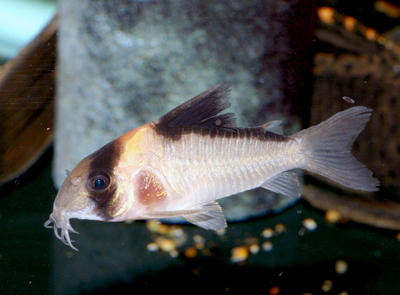The fish is a C121, and is considered by some as a variant of C. burgessi, but in actual fact it actually looks closer to C. adolfoi or C. duplicareus. Compare.
C. sp C121

picture courtesy Corydoras world
C. adolfoi

picture courtesy Corydoras world
C. duplicareus

picture courtesy Corydoras world
C. burgessi

picture courtesy Corydoras world
You will see that C. burgessi is quite a stocky fish and does not have the black band along the ridge of the back and all the rest do. The amount of black in the dorsal is variable in all four species.
Another interesting fact I found out with a group of C121 I was given when they were quite small, 20.0 mm SL. they all displayed the clear patch behind the gill cover. However some 6 months down the road none of the fish show the clear patch and all resemble C. adolfoi.
Ian




